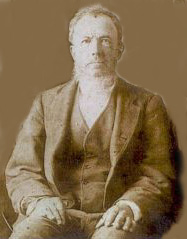 Johnson Franklin Cunningham was born in Oglethorpe County, Georgia1 on October 17, 1823 and died in Denton County, Texas on January 9, 18992. He lived with his family in Oglethorpe County, Georgia until 1880, when he moved his family to Texas.
Johnson Franklin Cunningham was born in Oglethorpe County, Georgia1 on October 17, 1823 and died in Denton County, Texas on January 9, 18992. He lived with his family in Oglethorpe County, Georgia until 1880, when he moved his family to Texas.
I do not have a copy of his will, and I’m not sure if he even made one. He does, however, make an appearance in the wills of several other people as a witness and executor. I found this curious. Why would so many people ask him to witness or execute their wills? Did he have legal training? If so, I don’t have any evidence of it. My grandfather Udell says that his grandfather, Amos Cunningham (Johnson Franklin’s son) told stories of his father being a minister (I haven’t found documentation). It makes sense that people might feel comfortable asking their minister to witness or execute their will.
William W. Power
12 Mar 1847
To my wife Martha Power during her natural life or widowhood, my whole and entire estate. At her death or marriage, my entire estate (except the negro slaves) to be sold, and after my daughter Anna G. Power is paid $100.00, then to be equally divided among all my children, viz, Elizabeth M., Anna G., Susan [or Samson?] P. and Mary W. Power. My negro slaves to be divided into as many equal lots as I have children at the time of my wife’s death; if my wife should marry, she shall have an equal share with my children in every respect. My Executor & Executrix may sell my tract of land on Brushy Creek and other tract on North River at the expiration of a lease to Mr. Cook for four years. Also the tract where I now live. My wife may give off portions of property as she can spare to my children as they marry or become of age. Executrix: my wife Martha Power. Executir: Willis Strickland. Signed: William W. Power. Witness: Richard B. Gholston, Francis Power, Johnson F. Cunningham. Rec’d 23 Sept 18483
Thomas J. Black
3 Nov 1854
All my land and property to be equally divided between my five children: Milla A. S. Black, Barbara W. Brown, Jonathon C. Black, Celia C. Black, and James W. Black. Executors: My friend John B. Moon and my brother John W. Black. Signed: Tho. Ja. Black. Witness: James S. Black, Thomas M. Anthony, Johnson F. Cunningham. Rec’d 7 May 1855.4
Mary Ann [Williams] Black
State of Georgia, Oglethorpe County I Mary Ann Black being of sound and disposing mind and memory do make, publish and declare this to be my last Will and Testament hereby revoking all other wills by me before made.Item 1st I give and bequeath unto Charles Filmore Sanders son of William J. Sanders my bed that I now sleep on and the furniture with it and one small chest known as my sugar chest, and one small round trunk.
Item 2nd I give and bequeath unto Eliza Eberhart a colored woman (that formerly belonged to me) all my wearing clothes, bandboxes and baskets and one small oven, one stone jar, one small boiler and all my earthenware – this I do for actual service she has rendered to me – besides other considerations.
Item 3rd I give and bequeath unto my son James S. Black all the balance of my estate ready money real or personal or mixed of what ever kind.
Item 4th I appoint my worthy friend Johnson F. Cunningham executor of this my last Will and Testament. In testimony where of, I have hereunto set my hand and seal. July 24th 1868. Mary Ann X [her mark] Black [seal]
Signed, Sealed and declared in presence of and in the presence of each other this July 24th 1868.
Gabriel Watson , J. G. Olive, J. F. Cunningham, State of Georgia
Personally appeared in Open Court Oglethorpe County Gabriel Watson + J Gibson Olive who were witnesses to the within will, after being duly sworn depose + say that they saw Mary Ann Black sign, seal, publish + declare with within to be her last Will + Testament, that at the time thereof she was of sound and disposing mind + memory and that she did it freely without compulsion + that they witnessed the same in the page 39 presence of the Testator at her special request + instance and in the presence of each other. So help us God. Sworn to + Subscribed in Open Court this 5th December 1870 J. G. Olive. G. Watson Georgia Court of Ordinary Oglethorpe County December Term 1870. The within last Will + Testament of Mary A. Black deceased of said county having been duly presented by the witnesses signing the above oath, the same having been duly proven in common form of law in Open Court at this Regular Term of the Court upon the oaths of Gabriel Watson + J. Gibson Olive the subscribing witnesses to said last Will + Testament the third one not doing so as he was named as executor. Ordered, That said Will be admitted to Record. This 5th December 1870 – Filed in Office 5th
Recorded this 6th day of Decr 1870.anuary 1871 – F. J. Robinson F J Robinson /s/ Ordinary O. C. Ordinary + Ex off Clk.5
John P. Tiller
Georgia, Oglethorpe County — I John P Tiller of said County and State being of sound and disposing mind and memory do make publish and declare this to be my last Will and testament hereby revoking all other wills by me made.Item 1st I give and bequeath and devise unto my wife Martha Ann Tiller all of my estate of whatever kind or nature personal and mixed ready money and change in ?????? during of her natural life or widowhood to be kept for the support of her and my daughter that is not married until they do marry or while they stay with my wife Martha Ann Tiller; also my two sons William M Tiller and John W Tiller to live with my wife until they become of age.
Item 2nd My will is if my wife dies or marries before my youngest child Matta A Tiller becomes of age that my Executors keep my Estate together for the support of my children that is not of age until my youngest child Matta A Tiller becomes of age or marrys when either count happens my will is that there be an equal division of my estate among my children that I have by my wife Martha Ann Tiller.
Item 3rd I appoint my wife Martha Ann Tiller Executrix and my brother Thomas R Tiller Executor of this my last Will and Testament.
J. P. Tiller (Seal)
Signed Sealed published and declared in our presence in the presence of each other and in the presence of the testator this June 11th 1863.
James S Black
J F Cunningham
George S Cunningham
David GrahamState of Georgia, Oglethorpe County — Personally appeared in open Court J F Cunningham and George S Cunningham two of the subscribing witnesses to the within will and after being duly sworn deposeth and saith that they saw John P Tiller sign seal publish and declare the within to be his last Will and Testament and at the time thereof he was of sound disposing mind and memory and that he did it freely without compulsion and that they signed the same as witnesses in the presence of said testator at his instance and request and in his presence and that they saw James S Black and David Graham sign the same as sitnesses in testators presence all of which is to the best of our knowledge and belief so help us god.
Johnson F Cunningham
George S CunninghamSworn to in open Court this 7th day of November 1866
E C Shackelford Ordinary
Court of Ordinary November term 1864
The last will and testament of John P Tiller late of Oglethorpe County deceased was exhibited in open Court by Martha Ann Tiller the executrix herein named and was in open Court at this regular term of the Court proven in Common form of law upon the oaths of Johnson F Cunningham and George S Cunningham two of the subscribing witnesses to the same. Ordered that said will be admitted to Record.Recorded this 11th day of November 1864
E C Shackelford Ordinary6
Brinkley Smith
January 1, 1857/December 1857, Oglethorpe County, GeorgiaI Brinkley Smith of said County and State being of sound and disposing mind and memory, make publish and declare this to be my last Will and Testament hereby revoking all other wills by me made
Item 1st I give and bequeath unto my Daughter Alley wife of Jesse Hardman one hundred dollars
Item 2nd I give and bequeath unto my son Isham Smith five dollars
Item 3rd I give and bequeath unto my son Martin Smith’s Estate five dollars
Item 4th I give and bequeath unto my son Elisha Smith sixty dollars which he is now due me for the rent of my land and also give him the privileges of living on my land four years longer from the date of this will if he wishes to do so.
Item 5th I give and bequeath and desire unto my son John B. Smith and my four daughters their names are Nancy and Betsey and Sarah and Rebecca all the rest and residue of my estate of whatever kind or nature real personal and mixed. I give and bequeath the whole balance of my property to my said five children above named in this Item to be equally divided between these five — also that they have the privilege of living on my plantation if they can do so by agreement for their support — if they cannot agree to live together in this way that four of them have the privilege of selling the land for an equal division — their names are John B. Smith, Nancy and Betsey and Sarah — my will is that my daughter Rebecca have nothing to do with the agreement of selling the land that it be left wholly with the other four above named to decide whether they will sell or not — but my daughter Rebecca have an equal share with them in the division. I appoint my son John B. Smith Executor of this my last Will and testament.
Signed sealed published declared in our presence in the presence of each other & in the presence of the testator this 1st day of January 1857 — his mark
Brinkley X Smith {Seal}
Johnson F. Cunningham Rolly H. Mathews
Colerian Mathews7
Barbara Williams
Record of Wills November Term 1851 Georgia
Oglethorpe CountyI Barbara Williams of said County being of sound and disposing mind and memory do publish and declare this to be my last will and testament, hereby Revoking all other wills by me made.
1st I give and bequeath unto to Mary Ann P. Anthony daughter of Matthew J. W. Anthony, one negro woman by the name of Louiza and her four children to wit: Charlotte, Elizabeth, Robert, and Henrietta and the future increase of the said female slaves to the
said Mary Ann and her heirs forever.2nd I give and bequeath unto Mahuldah Anthony daughter of Thomas B. Anthony one negro woman by the name of Teresa and her four children to wit: Evaline, Lucy, Nathan, and Henry and the future increase of said female slaves to her and her heirs forever.
3rd I give and bequeath unto Rebecca Williams Huff, daughter of Barbara Huff, two choice cows and calves, Bed and bedsteads and bed clothing also to Mary Ann P. Anthony and Mahuldah each a bed bedstead and clothing for the same.
4th I give and bequeath and devise unto my friend Johnson F. Cunningham all the rest and residue of my estate of whatever kind or nature Real, personal, and mixed ready money and choser [?] in action. I give and bequeath the whole balance of my property to my said friend Johnson F. Cunningham to him and his heirs forever in fee simple and this I do as well out of Regard & friendship for him, as for actual services and kindness he has heretofore rendered to me and which I know he will continue to render in the future.
Another consideration for this bequest is that I have four old negroes that I have owned for many years. They have been faithful servants and they will have to be supported by the said Johnson F. Cunningham and I most earnestly request him to take care of them. Their names are Dave, Charles, Robbin, and Lucy. Also I desire my said friend Johnson F. Cunningham to treat With great and marked kindness a negro girl by the name of Josephene, and the said Johnson F. Cunningham is to pay annually or to ? ill the best manner, for the comfort and support of___? Barbara Huff my Niece, annually the sum of seventy dollars (70) during the natural lifetime of this said Barbara Huff free from all control contracts or interference of any kind of her present or any future husband.
5th I further order and direct that the negroes bequeathed unto Mary Ann P. Anthony and Mahuldah Anthony be kept and controlled (sic) by my said friend Johnson F. Cunningham until my said nieces marry or become of age when either event happens then and not till then the said Johnson F. Cunningham is to deliver the negroes bequeathed to the said Mary Ann P. Anthony and Mahulda. The yearly value in the meantime to be applied to the education, support, and maintenance of the said Mary Ann P. and Mahuldah Anthony.
6th I appoint the said Johnson F. Cunningham Executor of this my last will and testament.
signed sealed published
and declared in our presence
in the presence of each other &
in the presents [sic] of the testator.
this 5th day of November 1850. her
Benj. F. Hardeman Barbara x Williams
Rolly H. Mathews Mark
Abel Eberhart
David Graham
Recorded 11 Nov 18518
These are all the wills I know about. If I discover others, I will update this post.
1Johnson Franklin Cunningham said that he was born in Georgia on each census, but his actual place of birth has not been verified.
2Some family members have given Johnson Franklin Cunningham’s death date as January 9, 1896, but his grave marker says January 9, 1899. I’m not sure which is correct, as I don’t have a vital record in my possession.
3Madison County Will Book B, Will Abstracts, page 43
4Madison County Will Book B, Will Abstracts, page 855Oglethorpe County Will Book E, Part 1, pp. 38-39, Georgia Archives Drawer 46, Box 11, Transcribed by Michael M. Black
6Oglethorpe County Will Book D, page 522, Transcribed by Wayne D. Tiller
7Oglethorpe County Will Book D, page 364, Transcribed by Jeannie Smith Zadach
8Transcribed by Jerry Mathews Palmer, unknown source

 This post is the third of a three-part series.
This post is the third of a three-part series.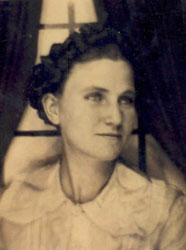 My great-grandmother, Lucille Inez Willis Thurman, passed away on February 19, 2006. Because she was my longest-lived great-grandparent, I have more memories of her than any of my other great-grandparents.
My great-grandmother, Lucille Inez Willis Thurman, passed away on February 19, 2006. Because she was my longest-lived great-grandparent, I have more memories of her than any of my other great-grandparents.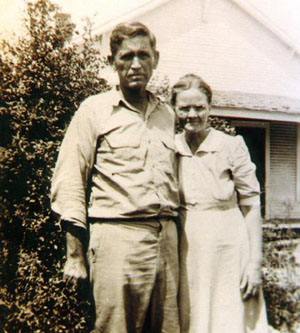
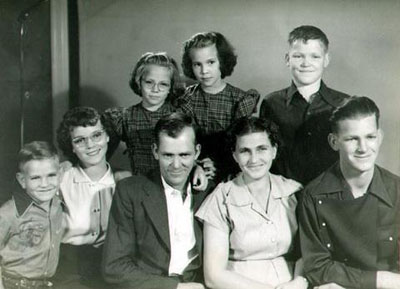
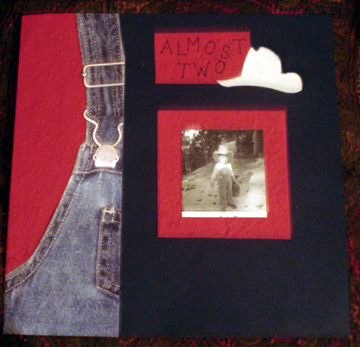

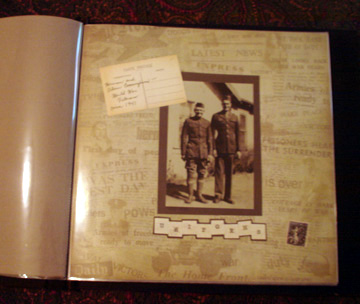
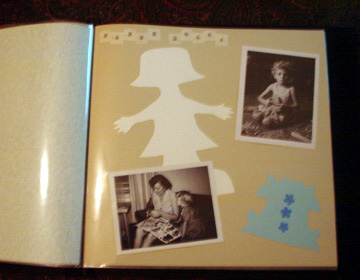

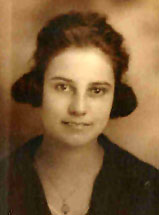 My great-grandmother, Annie Lola Jennings Cunningham, died when I was ten. As with my great-grandfather,
My great-grandmother, Annie Lola Jennings Cunningham, died when I was ten. As with my great-grandfather, 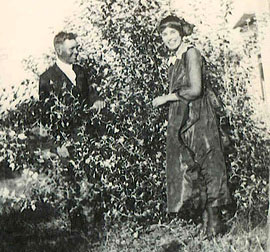
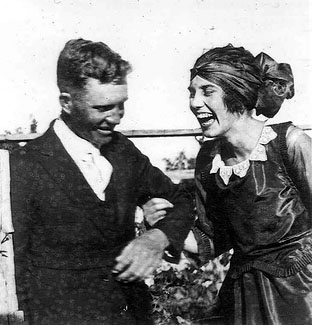
 My great-grandfather, Herman Cunningham, died when I was not quite nine. I don’t have many memories of him, as he lived in Texas and I lived in Colorado. However, I do remember some things, and this post is a biography of my great-grandfather focusing on all of my memories with a bit of what I’ve learned from others.
My great-grandfather, Herman Cunningham, died when I was not quite nine. I don’t have many memories of him, as he lived in Texas and I lived in Colorado. However, I do remember some things, and this post is a biography of my great-grandfather focusing on all of my memories with a bit of what I’ve learned from others.